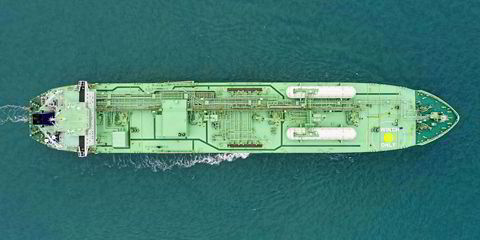Lehman Brothers’ collapse into bankruptcy in September 2008 already sounds like an echo from another era. Amid the blizzard of reflections and interpretations published in the past few days about what became the largest bankruptcy in US history, it seems an event from a distant place.
It was a time when making money in shipping seemed to be easy, China’s commodities boom was a novelty, the iPhone was in its infancy and Donald Trump was merely a second-division television celebrity.
How times have changed in 10 years.
Building successful shipping businesses, in virtually any sector, has become difficult and complex. China is now the world’s dominant engine of growth. Apple is worth more than $1trn. And Donald Trump? Well, he remains Donald Trump. He still intrudes into all our lives, not as an irritating star of the small screen but as President of the United States.
From the wreckage of the Lehman collapse, and the ensuing global banking crisis, the world was pulled back from the brink — politicians and regulators slashed interest rates and pumped money into the economy on an unprecedented scale.
What many people feared could have toppled into a second Great Depression merely morphed into the Great Recession.
And in many areas of business, especially in the US, the past decade has been one of remarkable growth. Apple and the other FAANGs — Facebook, Amazon, Netflix and Google — have led a record-breaking bull market on Wall Street for the entire decade.
There has been a boom in asset prices, with US household net worth now estimated to exceed $100trn, over 50% more than its previous high point before the crash.
Yet the low interest rates and easy money that helped much of the global economy invest in assets have been a double-edged sword for shipping.
The low interest rates and easy money that have helped much of the global economy invest in assets have been a double-edged sword for shipping
Buoyed by intermittent freight market peaks that promised a return of the go-go years, the first years of the current decade saw newbuilding orders continue to swell the world fleet. But slowing growth in world trade lead to most major markets being chronically over-tonnaged.
While seaborne trade has risen by 38% since 2008 to nearly 12 billion tonnes per year, the world fleet has grown a colossal 67% to 1.96 billion dwt, according to figures from Clarksons.
You do not need to be an economist to spot the problem: too many ships chasing too few cargoes.
Not only has that undermined much opportunity for a stable recovery in freight rates, the uncertainty has dented the asset prices of existing ships and newbuildings. Secondhand ship prices are down two-thirds on a decade ago and newbuilding prices about one-third.
Today’s global fleet of more than 94,000 vessels is valued by Clarksons at $959bn — less than the $979bn the smaller fleet was worth at the end of 2014.
Now here comes the crunch, and the remaining legacy that has yet to play out from the banking crisis. Interest rates are on the rise again from their all-time lows, as central banks move to hold back inflation.
It is easy to forget that anyone who has been in business for 10 years or less has known nothing but ultra-low interest rates.
The US held at 0.25% from 2008 to 2015 before starting its current upward trajectory to 2%, while Japan, Switzerland and Denmark flirted with unprecedented negative interest rates. Already, there is talk in the US of rates needing to rise above the expected 3%. In 2007, they hit 5.5%. Some emerging markets are already buckling under such concerns.
Ultra-low interest rates not only drove the price of assets higher, they prolonged the life of companies that would in normal conditions have been unable to survive. Many of those “zombie” companies continue to live on in shipping — not strong enough to grow, but too indebted for financiers to want to wind up.
Now, a decade on from Lehman, they face a final reckoning as interest rates move higher amid shipping markets that give no one an easy ride.






